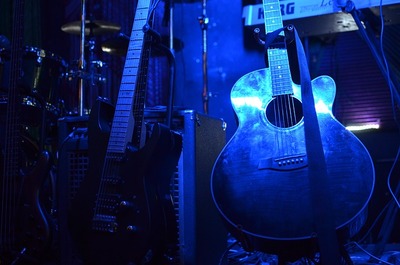Django Reinhardt, one of the most influential guitarists in the history of jazz, played a guitar that was as iconic as his music. His primary instrument was a Selmer-Maccaferri guitar, which became synonymous with his name and his signature Gypsy Jazz sound.

The Selmer-Maccaferri Guitar
Origin and Design:
Luthier: The Selmer-Maccaferri guitars were initially designed by Italian luthier Mario Maccaferri and produced by the French company Selmer.
Unique Features: These guitars were distinctive for their D-shaped sound holes (also known as “D-hole”) and later models featuring an oval sound hole. They had a resonator design and a large body, which contributed to their loud and clear sound.
Django’s Specific Model
Django Reinhardt’s most famous guitar was a 1932 Selmer-Maccaferri Model Jazz. This guitar was equipped with a D-shaped sound hole, a unique characteristic of the early models. However, after 1933, Selmer began producing guitars without Maccaferri’s internal resonator and with an oval sound hole, which also became popular among jazz musicians.
Characteristics of Django’s Guitar
Resonator: The original design included an internal resonator aimed at increasing volume and projection, ideal for the acoustic performance settings of the time.
Tone: Known for its bright and punchy tone, it was perfect for Reinhardt’s fast, intricate playing style.
Playability: The guitar’s neck and fingerboard were designed to accommodate the swift, precise finger movements that characterized Reinhardt’s technique.
Significance in Gypsy Jazz
Sound: The Selmer-Maccaferri’s distinct sound played a crucial role in defining the sonic landscape of Gypsy Jazz. Its ability to produce both warm, rich tones and sharp, cutting leads made it perfect for Reinhardt’s versatile playing style.
Durability: These guitars were built to withstand the rigors of travel and performance, which was essential for Reinhardt, who often performed in various venues.
Legacy
Influence: The Selmer-Maccaferri guitar has become a symbol of Gypsy Jazz. Many modern Gypsy Jazz guitarists, such as Bireli Lagrene and Stochelo Rosenberg, use replicas of this iconic instrument.
Replicas and Tributes: Various luthiers have created replicas and tributes to the original Selmer-Maccaferri design, ensuring that Django’s legacy continues to influence new generations of musicians.
Conclusion
Django Reinhardt’s Selmer-Maccaferri guitar was more than just an instrument; it was an extension of his musical genius. The guitar’s unique design and exceptional sound quality were integral to the development of Gypsy Jazz and remain influential to this day. Whether you’re a guitarist, a jazz enthusiast, or a lover of musical history, the story of Django’s guitar is a fascinating chapter in the world of music.




